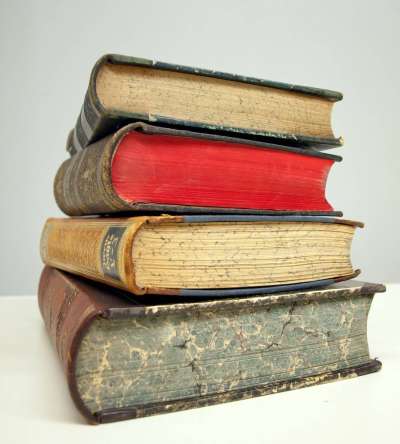Mark Twain's The Prince and the Pauper
Explore the themes present in the novel through any of various activities: written, dramatic, or artistic. As appropriate, incorporate examples of events and quotations from the novel that highlight these themes:
• Appearances are deceiving/Clothes make the man
• Superiority of democracy (democracy teaches men to be wise rulers) versus the pomposity of monarchy (ceremony)
• Triumph of the underdog
• Innocence of children
• Power of loyalty
• Evil nature of humankind
• Fantasy versus reality
Written Activities
1. Rewrite part of the novel from a new point of view. For example, Tom Canty's mother talking to a neighbor about the strange changes in her son.
2. Cast a film version of the novel. Imagine the director/producer wants you to make recommendations on the actors and actresses. Include photos and descriptions of the stars and tell why each is "perfect" for the part. Write a report to convince the producers of your selections.
3. Town criers were among the only sources of news during 16th-century England because most of the population was illiterate. Create a news story reflecting the main events and present it to the class in "town crier" style.
Dramatic Activities
1. Read or tape a scene from The Prince and the Pauperwith special effects. Choose a particularly interesting passage and read it with a musical background or sound effects.
2. Prepare a television commercial about The Prince and the Pauperminiseries that would make people want to watch.
3. Assign student courtroom roles for the trial of Hugh Hendon for usurping his brother's property and stealing his fiancee. Use students in the roles of Miles, Edith, Blake Andrews, and other servants as witnesses with the teacher as the judge.
Artistic Activities
1. Make a scale model or drawings of Pudding Lane and Offal Court. Make sure to include details described in the novel as well as other information gathered from research of 16th-century England.
2. Create a board game with rules using situations and characters from The Prince and the Pauper.
3. Ballads were a common means of keeping a story alive during 16th-century England. Convert the novel into a ballad, writing the lyrics and music or adapting words to music written by someone else.
Related Works
The Adventures of Huckleberry Finn, Mark Twain: Fantasy versus reality, identity
Pudd'nhead Wilson, Mark Twain: Innocence, the mob's opinion
A Connecticut Yankee in King Arthur's Court, Mark Twain: Kings learn mercy by being subjected to their own laws.
Oliver Twist, Charles Dickens: Style, triumph of the underdog, evil nature of humankind
Works Consulted or Cited
Beer, Barrett L. Rebellion and Riot: Popular Disorder in England during the Reign of Edward VI. Kent (OH): Kent State University Press, 1982.
Budd, Louis J., ed. Critical Essays on Mark Twain, 1867-1910. Boston: G.K. Hall and Co., 1982.
Chermely, Cynthia. "'Nawghtye mallenchollye': some faces of madness in Tudor England." The Historian. May 1987: 309-28.
Curtis, Timothy, and J.A. Sharpe. "Crime in Tudor and Stuart England." History Today. Feb 1988: 23-9.
Hickley, Sally. "Fatal Feeds? Plants, livestock losses and witchcraft accusations in Tudor and Stuart Britain." Folklore. Vol 101, no.2: 131-42.
Hill, Hamlin. Mark Twain's Letters to his Publishers: 1867-1894. Berkeley: University of California Press, 1967.
Jordan, W.K., ed. The Chronicle and Political Papers of King Edward VI. Ithaca (NY): Cornell University Press, 1966.
Mayhew, Henry and John Binny. The Criminal Prisons of London and Scenes of Prison Life. London: Frank Cass and Co. Ltd., 1968.
Salomon, Roger B. Twain and the Image of History. New Haven: Yale University Press, 1961.
Smith, Lacey Baldwin. Henry VIII: The Mark of Royalty. Boston: Houghton Mifflin Co, 1971.
Thurley, Simon. The Royal Palaces of Tudor England: Architecture and Court Life, 1460-1547. New Haven: Yale University Press, 1993.
Twain, Mark. The Prince and the Pauper. Berkeley: University of California Press, 1984.
Twining, E.F. The English Coronation Ceremony. London: Simkin Marshall, Ltd., 1937.
Wendy Patrick Cope received her A.B. and M.Ed. in English Education at The University of Georgia and currently serves as English department chair at Buckingham County High School in Buckingham, Virginia. Working with reluctant readers and writers at the secondary level is a special interest for her. She lives in Farmville, Virginia, with her husband, Jim and her 17-year-old-cat, Doorknob. This is her third teaching guide for Signet Classics.
ABOUT THE GUIDE EDITORSArthea (Charlie) J. S. Reed is currently president of the Assembly on Literature for Adolescents of NCTE (ALAN). She is the author of three books in the fields of literature and teaching: Reaching Adolescents: The Young Adult Book and the School, Comics to Classics: A Guide to Books for Teens and Preteens, and Presenting Harry Mazer. In addition, she is the author or co-author of numerous books in the fields of foundations of education and teaching methods. She was editor of The ALAN Review for six years and has co-edited the Penguin/Signet Classic teacher's guide series since 1988.
In May 1996, Dr. Reed retired after 17 years as a professor of education and six years as chairperson of education as Executive Director of Development and Education for Northwestern Mutual Life in Asheville, N.C. Dr. Reed and her husband Don live with their two dogs and a cat on a mountaintop in Fairview, N.C.
W. Geiger (Guy) Ellis, Professor Emeritus, University of Georgia, received his A.B. and M.Ed. Degrees from the University of North Carolina (Chapel Hill) and his Ed.D. from the University of Virginia. For most of his career, Guy has been active in teaching adolescent literature, having introduced the first courses on the subject at both the University of Virginia and the University of Georgia. He developed and edited The ALAN Review from 1978 to 1984, changing its focus from a newsletter to a referred journal. His research has had heavy emphasis on the content of literature instruction.













